Yesterday I played my second game of Chain of Command, and got
reasonably thoroughly thrashed. But it was still a very enjoyable
experience. (Always a sign of a good wargame, that.) Be warned, this
is a fairly image-heavy post.
I took these pictures with a proper camera (Pentax K10D) rather than
my phone, so I have even higher-resolution versions available if
anyone wants them.
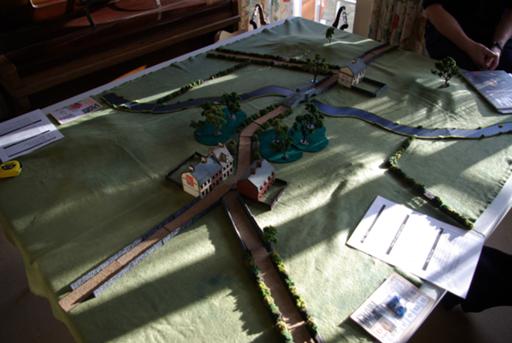
This was the table layout. I'm arbitrarily going to refer to the far
end, top right in this picture, as "north". A peaceful English village
some time in the late 1930s, after civil
war has
broken out.
I was one of two players running a platoon from the British Union of
Fascists, defending against a platoon from the Anglican League. Our
objective was to prevent any of the Anglicans getting off the south
edge of the table. In spite of the presence of the bridge, the stream
was fordable with some care.
Our concern was of course not to be flanked: both east and west sides
seemed to offer good opportunities for a fast-moving section or team
to get round any possible defence.

In the initial patrol phases, markers started getting locked down
quite quickly in the middle of the table.
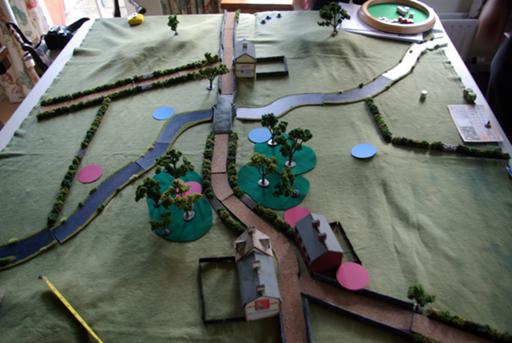
Two of the three enemy patrol markers made it across the river before
they could all be locked down.
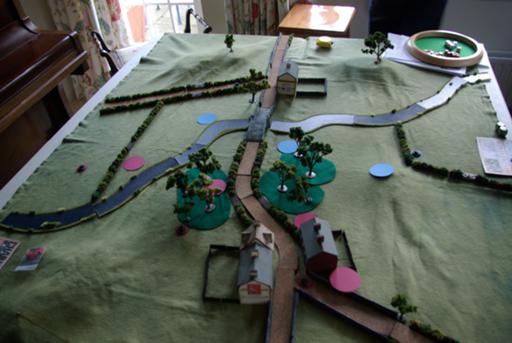
What's worse, one of the enemy jump-off markers was also across the
river (on the right, behind the hedge). Their others were on the
north-western road, and in the northern building. We had one on the
west flank, one behind the western woods, and one in the southern
building area.

Our first deployment was a section of irregulars in the field on the
left flank, who engaged the first enemy platoon (on the road). They
did a pretty good job of it at first, in spite of having no machine
guns.
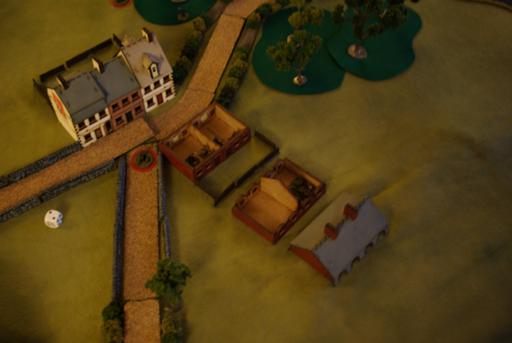
Meanwhile our second section went into the house, riflemen on the
ground floor, Lewis gun team above. This turned out not to be the best
of plans.
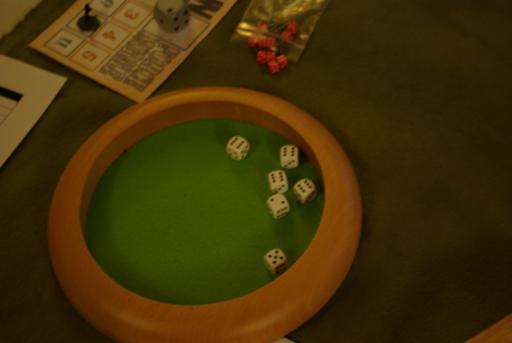
Mostly because these were our first casualty rolls. Lewis team wiped
out in a single volley from the enemy in their eastern jump-off point,
in spite of the hard cover from the building.
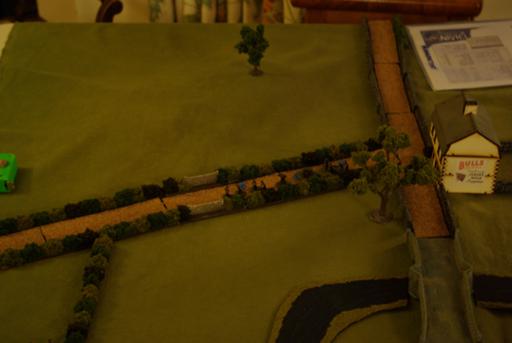
The enemy continued to exchange fire with our irregulars.
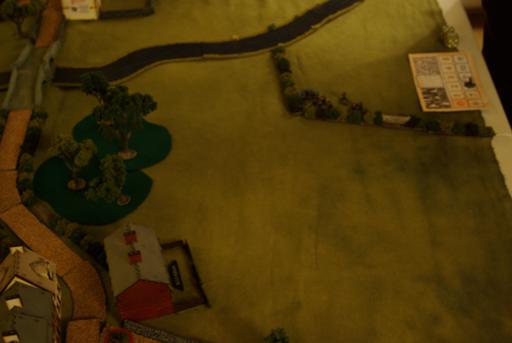
The survivors from the eastern section continued to glare across the
low hill towards the enemy, and they glared back.
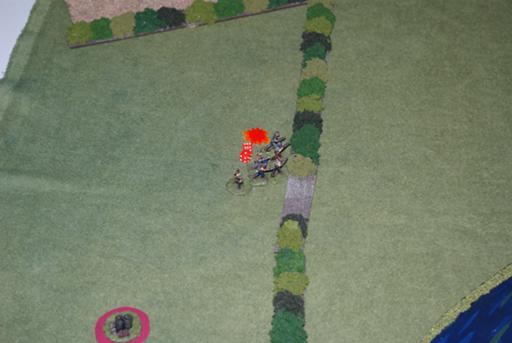
At this point I switched to coaxial flash.
Our irregulars continued to come under fire, and started to accumulate
serious shock and pinning.
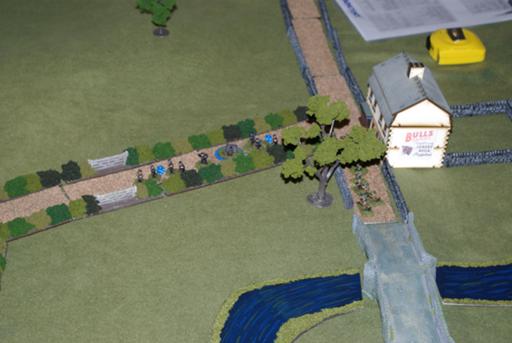
The third enemy section came on -- a regular Army section, with a
proper Bren rather than a Lewis gun.
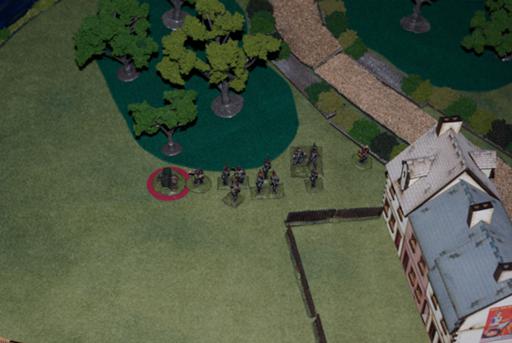
This was the cue for our third section, deployed behind woods to stop
the regulars rushing the bridge. Which worked, I suppose.
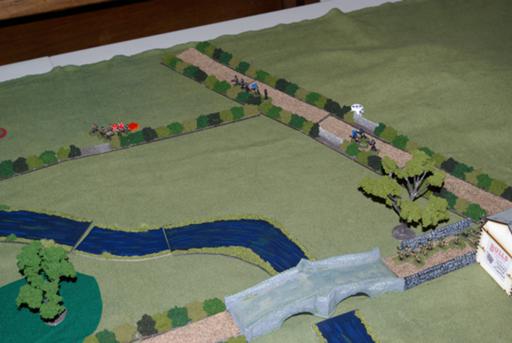
The irregulars continued to take the brunt of the enemy fire.

Finally, they broke, fled from their positions, and sought cover.
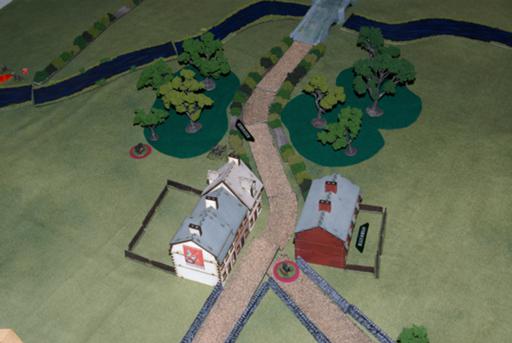
Back in the centre of the village, the other two sections (or rather a
section and a surviving rifle team) stayed in their defensive
positions ready to tackle an enemy advance.
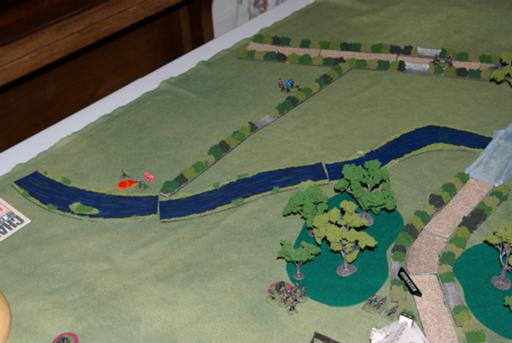
The enemy sent a rifle team along on the west side to keep harrassing
our irregulars.

They managed to get into a tactical stance just inside close range and
stay there for a while.
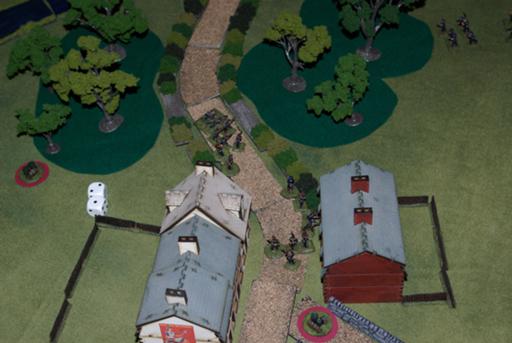
As the other two enemy sections approached the woods, our remaining
forces moved in from the south.

The Lewis team got caught on the road (by an enemy Lewis team finally
making it across the river), and wasn't able to respond effectively,
which didn't help.
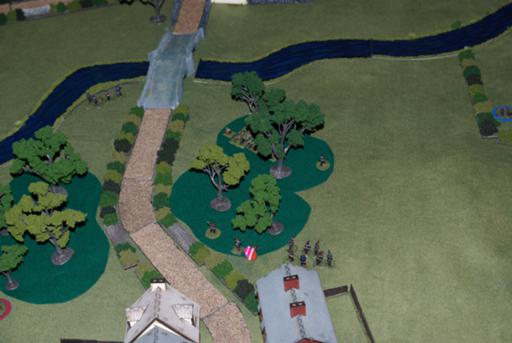
With everyone either in or near the woods, and time getting on, and
our force morale leaking away by bits and pieces, we decided to risk
everything with a close combat. This went very well in terms of
casualties, wiping out the enemy section on which we'd concentrated
our attack, but our own casualties were heavy enough that our morale
was severely impaired.
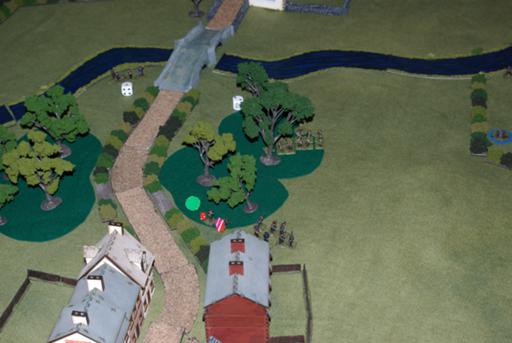
And the enemy still had another section.
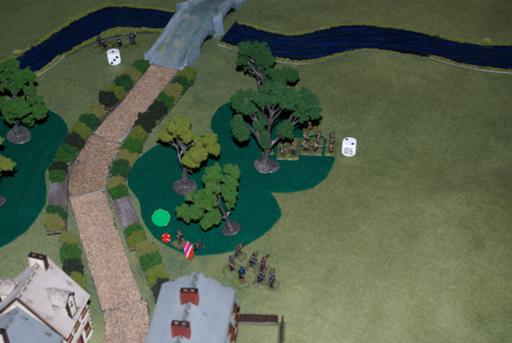
In the end they managed to wound (repeatedly) and kill enough leaders,
and wipe out enough teams, that the remaining Fascist forces broke and ran.
A very tough scenario, taking something like five hours of play time,
and we didn't even see the attempts at side runs that I'd expected.
The enemy team that chased and cut down our irregulars was close to
running off our baseline on the west side, but in retrospect what I
think I might have done as the enemy is send two individual rifle
teams down the two sides at maximum speed (perhaps with a junior
leader each to un-shock them), while the other forces (a full section
plus the MG teams, under a senior leader) made a conventional assault
in the centre. It's a hard setup to defend effectively.
There's another writeup of this game
here.
Comments on this post are now closed. If you have particular grounds for adding a late comment, comment on a more recent post quoting the URL of this one.